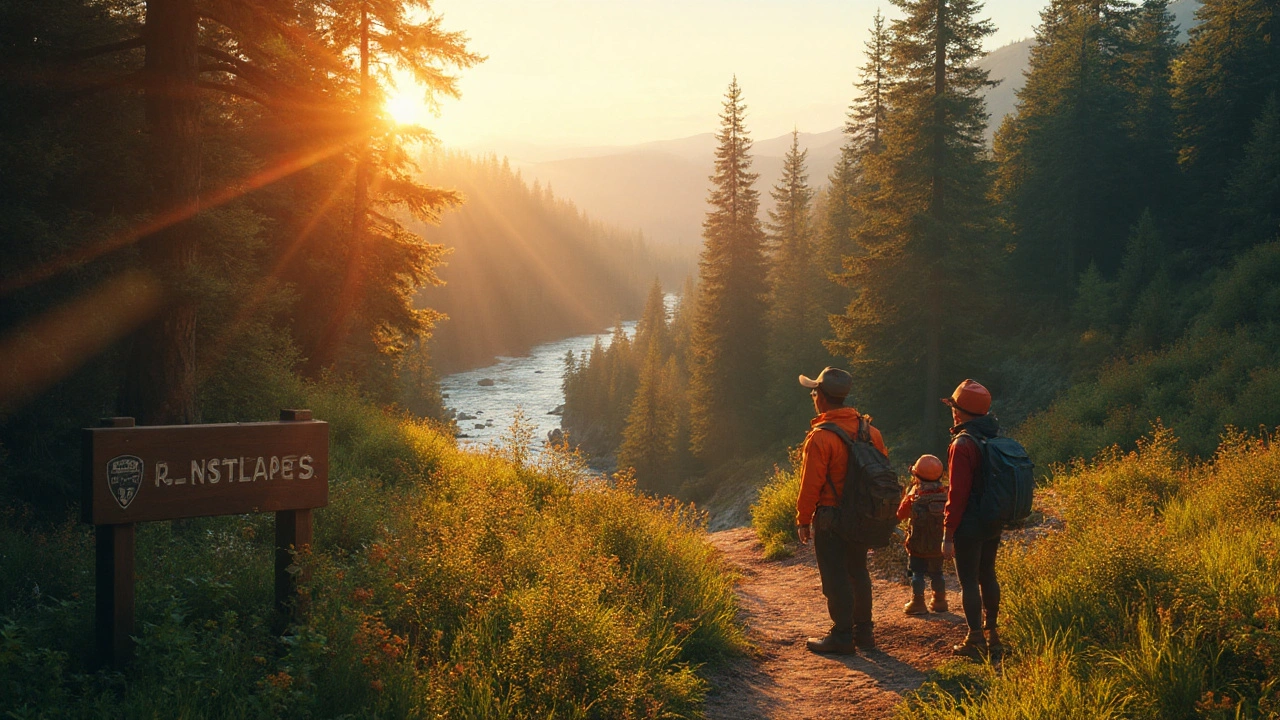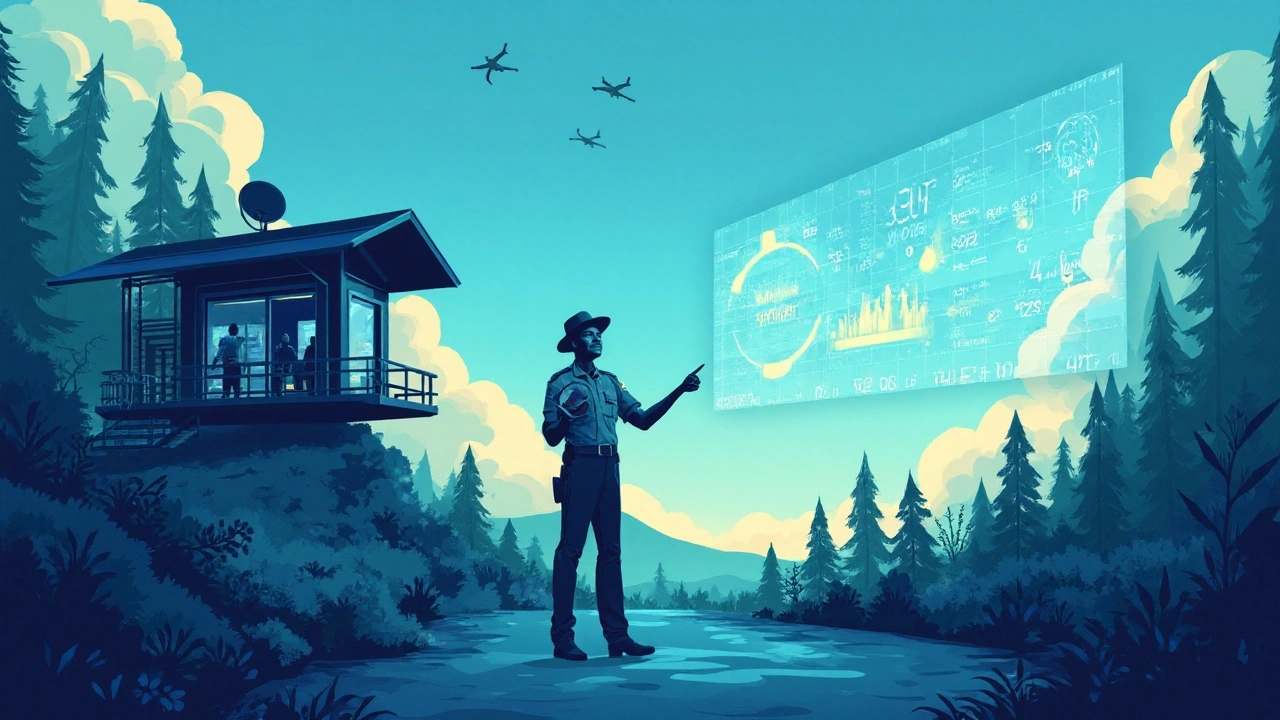Which US National Park Is Safest? 2025 Safety Rankings Explained

National Park Safety Checker
Acadia National Park is a federal protected area on Maine’s Atlantic coast that consistently records the lowest visitor incident rate among the 63 US national parks, according to the National Park Service’s 2024 Safety Report.
Why Safety Matters in National Parks
Millions of people head outdoors each summer, but a single slip or a missed warning can turn a dream hike into a rescue mission. The National Park Service (NPS) federal agency that manages the US national park system tracks every reported injury, lost hiker, and wildlife encounter. Over the past decade the agency has built a Visitor Safety Index a composite score that blends incident per 100,000 visitors, ranger patrol density, and average rescue response time to give visitors a quick sense of how safe each park really is.
How Safety Is Measured
Three core metrics drive the Safety Index:
- Incident Rate: Number of documented injuries, illnesses, or wildlife bites per 100,000 visitors.
- Ranger Patrol Frequency: Hours of ranger‑on‑site patrol per square mile per month.
- Search & Rescue (SAR) Response Time: Average minutes from alert to arrival of SAR teams.
Data comes from the NPS’s annual Annual Incident Report a public record compiled from park medical logs, incident reports, and SAR dispatches. By normalizing each figure, the Service creates a single safety score that lets us rank parks objectively.
Top‑Ranked Safest Parks in 2025
Based on the latest index, three parks stand out:
- Acadia National Park Maine coastal park with 1.2 million annual visitors - Incident Rate: 3.4 per 100,000, Ranger Patrol: 68 hrs/mi², SAR Response: 12min.
- Shenandoah National Park Virginia’s Blue Ridge refuge, 1.0 million visitors - Incident Rate: 4.1 per 100,000, Ranger Patrol: 62 hrs/mi², SAR Response: 14min.
- Cuyahoga Valley National Park Ohio’s urban‑rural blend, 2.3 million visitors - Incident Rate: 4.8 per 100,000, Ranger Patrol: 59 hrs/mi², SAR Response: 15min.
All three share dense ranger staffing, well‑marked trails, and low visitor density relative to their size, which keeps incidents rare and response times fast.

Safety Comparison Table
| Park | Incident Rate (per 100k visitors) |
Ranger Patrol (hrs/mi²/month) |
SAR Response (minutes) |
|---|---|---|---|
| Acadia | 3.4 | 68 | 12 |
| Shenandoah | 4.1 | 62 | 14 |
| Cuyahoga Valley | 4.8 | 59 | 15 |
What Makes a Park Safe?
Safety isn’t magic; it’s the result of a few concrete factors that park managers control:
- Ranger Presence: More patrol hours mean quicker hazard detection and faster assistance.
- Trail Design: Clear signage, well‑maintained paths, and low‑gradient routes reduce slips and lost hiker incidents.
- Visitor Education: Pre‑visit briefings, on‑site kiosks, and mobile alerts improve situational awareness.
- Infrastructure: Visitor centers with first‑aid kits, reliable cell coverage in key zones, and emergency call boxes.
- Environmental Factors: Parks with milder weather, fewer wildlife conflicts, and stable terrain naturally see fewer accidents.
Acadia shines because it combines high ranger staffing with compact acreage, making it easy for crews to patrol every mile. Shenandoah benefits from low elevation changes and a strong volunteer ranger program, while Cuyahoga Valley’s urban proximity grants rapid EMS access.
Practical Tips for Staying Safe Anywhere
Even the safest park can surprise you. Follow these habits to keep the odds in your favor:
- Check the park’s Current Conditions Report daily updates on weather, trail closures, and wildlife sightings published by NPS before you go.
- Carry a basic first‑aid kit, a map, and a charged phone with offline maps enabled.
- Stay on marked trails; off‑trail travel increases both injury risk and wildlife encounters.
- Inform someone of your itinerary and expected return time.
- Respect wildlife - keep a minimum of 30feet from bears and elk, store food in provided lockers.
- Hydrate and pace yourself; heat exhaustion is a common cause of rescues even in cooler parks.
These steps apply whether you’re wandering Acadia’s rocky shoreline or hiking Shenandoah’s Skyline Drive.
Related Topics You Might Explore Next
If safety sparked your curiosity, you may also want to read about:
- Search and Rescue Operations the coordinated effort by park rangers, local fire departments, and volunteer groups to locate and assist lost or injured visitors.
- Wildlife Management Plans strategies parks use to balance visitor access with animal protection, reducing dangerous encounters.
- Climate Impact on Trail Safety how shifting weather patterns increase erosion, landslides, and fire risk in national parks.
Each of these deep‑dive topics links back to the core goal of keeping you safe while you enjoy America’s natural treasures.

Frequently Asked Questions
Which US national park has the lowest visitor injury rate?
Acadia National Park records the lowest injury rate - about 3.4 incidents per 100,000 visitors in the 2024 NPS report.
How does the National Park Service calculate the Visitor Safety Index?
The index blends three normalized metrics: incident rate per 100,000 visitors, ranger patrol hours per square mile, and average Search & Rescue response time. Each metric is weighted equally to produce a score from 0 (least safe) to 100 (most safe).
Are larger parks like Yellowstone less safe because of size?
Size alone isn’t the issue; higher visitor volumes and more rugged terrain raise incident numbers. Yellowstone’s incident rate sits around 9.6 per 100,000 visitors, higher than most smaller parks with robust staffing.
What should I do if I get lost in a national park?
Stay put, assess your surroundings, and use a whistle or phone to signal for help. Most parks have emergency call boxes at trailheads; if you’re in a low‑signal area, activate your phone’s emergency SOS feature and provide your exact location.
Do parks provide free safety briefings for visitors?
Many parks, including Acadia and Shenandoah, offer free ranger‑led safety talks at visitor centers. Check the park’s daily schedule on the NPS website or at the entrance kiosk.